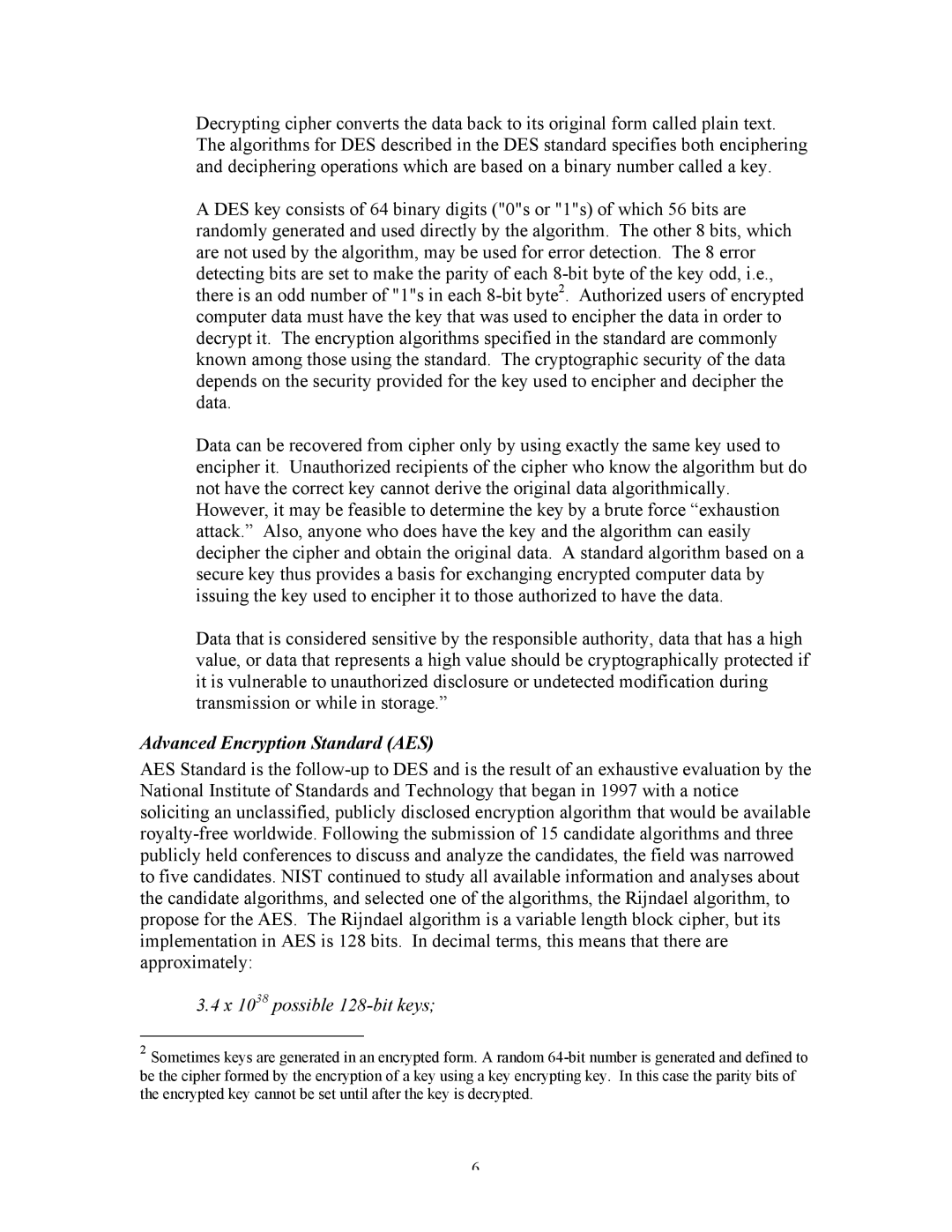Decrypting cipher converts the data back to its original form called plain text. The algorithms for DES described in the DES standard specifies both enciphering and deciphering operations which are based on a binary number called a key.
A DES key consists of 64 binary digits ("0"s or "1"s) of which 56 bits are randomly generated and used directly by the algorithm. The other 8 bits, which are not used by the algorithm, may be used for error detection. The 8 error detecting bits are set to make the parity of each
Data can be recovered from cipher only by using exactly the same key used to encipher it. Unauthorized recipients of the cipher who know the algorithm but do not have the correct key cannot derive the original data algorithmically. However, it may be feasible to determine the key by a brute force “exhaustion attack.” Also, anyone who does have the key and the algorithm can easily decipher the cipher and obtain the original data. A standard algorithm based on a secure key thus provides a basis for exchanging encrypted computer data by issuing the key used to encipher it to those authorized to have the data.
Data that is considered sensitive by the responsible authority, data that has a high value, or data that represents a high value should be cryptographically protected if it is vulnerable to unauthorized disclosure or undetected modification during transmission or while in storage.”
Advanced Encryption Standard (AES)
AES Standard is the
3.4 x 1038 possible 128-bit keys;
2Sometimes keys are generated in an encrypted form. A random
6
